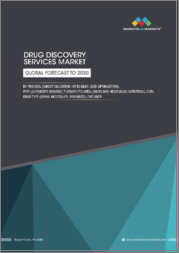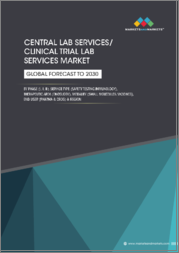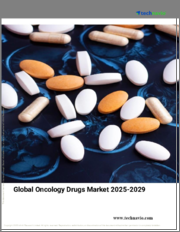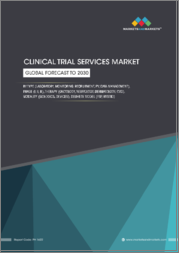
|
시장보고서
상품코드
1441508
종양학용 AI : 시장 점유율 분석, 업계 동향 및 통계, 성장 예측(2024-2029년)AI in Oncology - Market Share Analysis, Industry Trends & Statistics, Growth Forecasts (2024 - 2029) |
||||||
종양학용 AI 시장 규모는 2024년에 14억 6,000만 달러로 추정되고, 2029년까지 67억 1,000만 달러에 이를 것으로 예측되고 있으며, 예측 기간(2024-2029년) 동안 35.51%의 연평균 복합 성장률(CAGR)로 성장할 전망입니다.
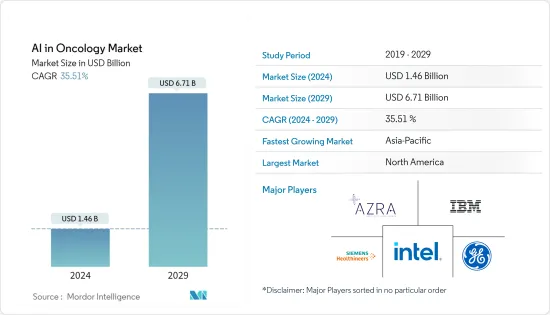
팬데믹 중 시장 성장을 지원하는 주요 측면 중 하나는 복잡한 데이터 세트를 진단, 치료 및 분석하기 위한 AI 도입 증가이며, 이는 병원 인프라 및 의사 부담을 최소화로 제한할 수 있었습니다. 엘제비아가 2021년 12월에 발표한 기사에 따르면 AI와 머신러닝(ML)의 최근 진보로 최첨단 기술의 이용에 의한 폐암의 진단과 치료가 촉진되었습니다. 예를 들어, 임상 데이터와 이미지 데이터를 ML 방법에 통합하면 면역 요법으로 인한 폐 감염과 COVID-19 바이러스로 인한 폐 감염을 구별 할 수 있습니다.
또한 이미 폐암을 앓고있는 사람은 COVID-19 감염의 위험이 높습니다. 2020년 11월에 아시아 퍼시픽 저널 오브 캔서 케어에 게재된 기사에 따르면, 암 환자, 특히 폐암 환자는 면역력이 약하기 때문에 COVID-19 및 기타 영향을 받기 쉬워지고 있다 합니다. 또, 봉쇄의 제한에 의해 팬데믹 중에는 암 환자의 진단, 치료, 케어가 특히 곤란했습니다. 최신 AI 및 ML은 이러한 상황에서 암 환자의 진단, 케어, 치료를 개선할 가능성을 가져옵니다.
게다가 팬데믹 중에는 AI가 암 화상처리의 백로그를 관리하기 위해 채용되어 팬데믹 중 노동력 부족으로 인한 헬스케어 종사자의 작업부하가 경감되었습니다. Springer Nature Limited가 2022년 10월에 제출한 기사에 따르면, AI는 피부암, 폐암, 유방암, 자궁경부암의 검출에 사용되고 있으며, 이에 따라 증가한 암 이미지 분석의 백로그 관리를 지원했습니다.
예측 기간 동안 시장 확대를 추진할 것으로 예상되는 주요 요인은 세계 암의 높은 이환율입니다. 예를 들어 미국 암 협회에 따르면 2022년 말까지 미국에서는 약 190만명이 새롭게 암으로 진단되어 60만 9,360명이 암으로 사망한 것으로 추정되고 있습니다. 또한 WHO에 따르면 2022년 2월에는 폐암, 유방암, 직장암, 결장암이 가장 많았습니다. 또한 세계 암 사망의 1/3은 BMI 증가, 흡연, 신체 활동 부족으로 인해 발생합니다. 따라서 세계에서 암 유병률이 상승함에 따라 정확한 진단을 위한 AI의 도입이 촉진되어 이에 따라 조사 대상 시장의 성장에 기여할 것으로 예상됩니다.
게다가 세계적으로 확대되는 의료 인프라의 진보도 시장 성장을 가속하고 있습니다. 예를 들어 2021년 7월 인도 세계경제포럼의 4차 산업혁명센터는 AI, IoT, 블록체인 등의 선진기술에 초점을 맞추는 암치료 프로젝트의 지속가능한 변화를 위한 4차 산업 혁명(FIRST)의 시작을 발표했습니다. 인도에서 저렴한 가격으로 쉽게 접근할 수 있는 고품질 암 치료를 제공하는 것을 목표로 합니다. 따라서 건강 관리 인프라의 확대는 예측 기간 동안 시장 성장을 가속할 것으로 예상됩니다.
또한 최근에는 유방암의 조기 발견 진단을 목적으로 방사선 영상 촬영에 AI의 도입이 진행되고 있습니다. 연방 정부 기관은 유방암 진단을 위한 다양한 AI 및 머신러닝(ML) 기반 의료기기의 승인을 늘리고 있으며, 시장 성장이 급성장하고 있습니다. 예를 들어, FDA는 2021년 1월 Visage Imaging GmbH의 Visage Breast Density 의료기기, 2021년 1월 Seno Medical Instruments, Inc.의 Imagio Breast Imaging System 등 2022년 10월까지 약 178개의 AI 및 ML 기반 의료기기를 승인했습니다. 따라서 FDA는 다수의 AI 대응 의료기기 승인에 적극적으로 참여하고 있기 때문에 예측기간 동안 상당한 성장이 예상됩니다.
따라서 위의 요인으로 인해 조사 대상 시장은 예측 기간 동안 성장할 것으로 예상됩니다. 그러나 초기 비용 상승 및 노동력 대체에 대한 우려로 인해 시장 성장이 방해될 수 있습니다.
종양에서의 AI 시장 동향
화학요법 부문은 예측 기간 동안 가장 높은 성장률을 나타낼 것으로 예상됩니다.
화학요법 기반 치료는 고속으로 이동하는 암세포를 파괴하는 약제 분자를 이용합니다. 화학요법 치료에서 AI의 통합은 의료 전문가가 환자의 개인화된 디지털 프로파일을 개발할 수 있도록 지원하여 치료 중 용량을 조정할 수 있습니다. 화학요법에 AI를 통합하기 위한 조사 활동 증가로 이 분야의 성장은 더욱 가속화됩니다. 예를 들어, 2022년 6월에 싱가포르 국립대학(NUS)은 약물 복용량, 투약 내용, 바이오마커의 존재 등 다양한 임상 데이터를 활용하여 암 환자의 결과 개선을 이끌어내고 개인에 맞는 화학요법의 투여량 권고를 제공하는 환자 디지털 프로필을 맞춤화하는 CURATE.AI 솔루션 개발을 발표 했습니다. 그러므로 화학요법에 AI를 통합함으로써 발생하는 부작용이 적은 화학요법량 조정, AI 모델을 이용한 암 재발 예측, 고정밀도 등의 이점으로 인해 이러한 제품의 도입이 증가할 가능성 있습니다. 목표 인구를 늘리고 결국 시장 성장을 가속합니다.
또한 화학요법의 반응과 암 예후를 예측하기 위해 AI 모델이 채용되고 있어 이 분야의 성장을 추진하고 있습니다. 예를 들어, 2022년 9월, 2022년의 유럽 임상 종양회(ESMO) 회의에서 연구가 발표되어, 근층 침윤성 방광암(MIBC)에 있어서의 시스플라틴 기반의 수술전 화학요법이 반응할 가능성이 강조되어 그 결과, 암 예측과 예후를 위한 AI 모델의 도입이 이 분야의 성장을 가속하고 있습니다.
북미는 종양학용 AI 시장을 지배할 것으로 예상됩니다.
디지털 인프라의 존재와 유리한 정부 및 상환 규제와 같은 요인으로 인해 북미가 시장을 독점할 것으로 예상됩니다. 예를 들어, 2022년 9월에 Elsevier에 게재된 기사에 따르면, AI는 MRI 스캔 시간을 단축하고, 비용 절감과 시간을 절약하며, 결과적으로 환자 결과를 향상시킵니다. 미국에서는 정부가 직접 상환 정책을 제공하여 국가에 대한 의료 접근을 민주화하고 전반적인 건강 성과를 향상시키고 있습니다. 따라서 미국의 정부 상환 증가는 북미에서 조사된 시장 성장에 기여하는 중요한 요소 중 하나입니다.
종양학용 AI의 도입으로 치료의 질에 영향을 주지 않고 전반적인 암 치료 비용이 절감되고 이 지역에서 수요가 급증하고 있습니다. 예를 들어 미국 임상 종양회가 실시한 조사에 따르면 2022년에는 미국의 종양내과의 치료비가 약 5% 삭감되었습니다. 이 때문에 미국 종양학용 AI의 도입이 급증하고 있으며 지역의 성장이 격화되고 있습니다.
미국의 주요 제품 출시, 시장 기업의 집중, 주요 기업 간의 전략적 제휴는 미국 종양학용 AI 시장의 성장을 가속하는 요인의 일부입니다. 예를 들어, 2021년 11월, Sanofi-Aventis 미국 LLC.는 미국에 본사를 둔 AI 정밀의료 기업 Owkin, Inc. 발표했습니다. 이 제휴는 폐암, 유방암, 다발성 골수종 등 주요 분야에서 확대되는 사노피의 종양 포트폴리오가 임상시험 설계를 최적화하고 AI를 활용하여 질병 및 치료 결과의 예측 바이오마커를 검출하는데 도움을 줍니다. 이 지역의 지속적인 전략적 협력은 이 나라 시장 성장을 가속할 것으로 예상됩니다.
그러므로 앞서 언급한 요인으로 인해 조사 대상 시장의 성장이 북미에서 예상됩니다.
종양학용 AI 업계 개요
종양학용 AI 시장은 세계적 및 지역적으로 사업을 전개하는 여러 기업의 존재에 의해 세분화되고 있습니다. 경쟁 구도에는 Azra AI, IBM Corporation, Siemens Healthineers AG, Intel Corporation, GE Healthcare, NVIDIA Corporation, Digital Diagnostics Inc., ConcertAI LLC, Median Technologies Inc. 및 PathAI를 포함하여 시장 점유율을 보유하고 잘 알려진 몇 개의 국제 및 현지 기업에 대한 분석이 포함됩니다.
기타 혜택
- 엑셀 형식 시장 예측(ME) 시트
- 3개월의 애널리스트 서포트
목차
제1장 서론
- 조사의 전제 조건 및 시장의 정의
- 조사 범위
제2장 조사 방법
제3장 주요 요약
제4장 시장 역학
- 시장 개요
- 시장 성장 촉진요인
- 헬스케어 인프라의 급속한 진보
- 암의 이환율 증가
- 암 조기 및 정확한 진단에 대한 수요 증가
- 시장 성장 억제요인
- 고액의 초기 비용 및 인원의 대체에 대한 우려
- Porter's Five Forces 분석
- 신규 참가업체의 위협
- 구매자의 협상력
- 공급기업의 협상력
- 대체 제품의 위협
- 경쟁 기업간 경쟁 관계의 격렬
제5장 시장 세분화(금액별 시장 규모)
- 컴포넌트별
- 소프트웨어 솔루션
- 하드웨어
- 서비스
- 암 유형별
- 유방암
- 폐암
- 전립선암
- 결장직장암
- 뇌종양
- 다른 유형의 암
- 치료 유형별
- 화학 요법
- 방사선 요법
- 면역 요법
- 기타 치료 유형
- 용도별
- 암 검출
- 창약
- 의약품 개발
- 기타 용도
- 지역별
- 북미
- 미국
- 캐나다
- 멕시코
- 유럽
- 독일
- 영국
- 프랑스
- 이탈리아
- 스페인
- 기타 유럽
- 아시아태평양
- 중국
- 일본
- 인도
- 호주
- 한국
- 기타 아시아태평양
- 중동 및 아프리카
- GCC
- 남아프리카
- 기타 중동 및 아프리카
- 남미
- 브라질
- 아르헨티나
- 기타 남미
- 북미
제6장 경쟁 구도
- 기업 프로파일
- Azra AI
- IBM Corporation
- Siemens Healthineers AG
- Intel Corporation
- GE Healthcare
- NVIDIA Corporation
- Digital Diagnostics Inc.
- ConcertAI LLC
- Median Technologies Inc
- PathAI
- Medtronic
제7장 시장 기회 및 미래 동향
AJY 24.03.15The AI in Oncology Market size is estimated at USD 1.46 billion in 2024, and is expected to reach USD 6.71 billion by 2029, growing at a CAGR of 35.51% during the forecast period (2024-2029).

One of the main aspects that supported the market growth during the pandemic was the increased adoption of AI to diagnose, treat, and analyze complicated datasets, which helped to minimize the burden on the hospital infrastructure and the physicians. According to the article published by Elsevier in December 2021, the recent advancements in AI and machine learning (ML) boosted the diagnosis and treatment of lung cancer through the utilization of cutting-edge technologies. For instance, the incorporation of clinical and imaging data with ML methods led to the differentiation between lung infections produced by immunotherapy and those produced by the COVID-19 virus.
In addition, the risk of the COVID-19 virus is higher in those already suffering from lung cancer. As per the article published in the Asian Pacific Journal of Cancer Care in November 2020, cancer patients, particularly those with lung cancer, have weaker immune systems, making them more susceptible to COVID-19 and other consequences. Also, due to lockdown restrictions, cancer patient diagnosis, treatment, and care were particularly challenging during the pandemic. Modern AI and ML offer the potential to improve cancer patient diagnosis, care, and therapy in such circumstances.
Furthermore, during the pandemic, AI was employed to manage the backlog of cancer imaging, reducing workloads on healthcare professionals. As per the article submitted by Springer Nature Limited in October 2022, AI was being used for the detection of skin cancer, lung cancer, breast cancer, and cervical cancer to assist in managing the backlog of cancer image analysis that grew as a result of the workforce shortages during the pandemic.
The key factor that is anticipated to propel market expansion over the forecast period is high cancer prevalence all over the world. For instance, as per the American Cancer Society, Inc., there will be around 1.9 million new cancer diagnoses and 609,360 deaths due to cancer in the United States by the end of 2022. Additionally, according to the WHO, in February 2022, lung, breast, rectum, and colon cancers were the most common ones. Furthermore, globally one-third of cancer deaths occur due to the increase in body mass index, high tobacco use, and lack of physical activity. Thus, the rising prevalence of cancer worldwide is likely to boost the adoption of AI for its accurate diagnosis, thereby contributing to the growth of the market studied.
In addition, the expanding healthcare infrastructure advancements worldwide are also propelling the market growth. For instance, in July 2021, the Centre for Fourth Industrial Revolution of the World Economic Forum India announced the launch of the Fourth Industrial Revolution for Sustainable Transformation (FIRST) of the Cancer Care project to focus on advanced technologies like AI, IoT, and blockchain to deliver affordable, easily accessible, and high-quality cancer care in India. Thus, the expansion of healthcare infrastructure is expected to boost market growth during the forecast period.
Furthermore, in recent years, there has been a surge in the adoption of AI in the radiographic imaging of breast cancer for its early detection and diagnosis. Federal agencies have increased the approval of various AI and machine learning (ML) based medical devices for breast cancer diagnosis, which is burgeoning the market growth. For instance, FDA has approved around 178 AI/ML-based medical devices till October 2022, such as Visage Breast Density medical device by Visage Imaging GmbH in January 2021 and Imagio Breast Imaging System by Seno Medical Instruments, Inc., in January 2021. Thus, owing to the active involvement of the FDA in the approval of numerous AI-enabled medical devices is expected to have significant growth over the forecast period.
Therefore, owing to the factors as mentioned above the market studied is anticipated to witness growth over the forecast period. However, high initial costs and concerns over the replacement of the human workforce are likely to impede market growth.
AI in Oncology Market Trends
Chemotherapy Segment is Expected to Have a Highest Growth Rate in the Forecast Period
The chemotherapy-based treatment utilizes drug molecules that destroy fast-moving cancer cells. The integration of AI in chemotherapy treatment assists healthcare professionals in the development of a personalized digital profile of the patients, through which their dose can be tailored during the treatment. The increase in research activities for incorporating AI in chemotherapy further accelerates segment growth. For instance, in June 2022, the National University of Singapore (NUS) announced the development of the CURATE.AI solution, which utilizes various clinical data, such as the dosage of the drug, medications, and presence of biomarkers, to customize the digital profile of the patient that provides personalized chemotherapy dosage recommendations resulting in the improvements in cancer patient outcomes. Hence, owing to the advantages offered by the incorporation of AI in chemotherapy, such as tailoring of chemotherapy dosages resulting in fewer side effects, prediction of cancer recurrence by using AI models, and high accuracy, the adoption of these products is likely to increase among the target population, ultimately driving the market growth.
In addition, AI models are being employed to predict chemotherapy responses and cancer prognosis, driving the segment's growth. For instance, in September 2022, a study was presented at the European Society for Medical Oncology (ESMO) Congress 2022, highlighting the likelihood of cisplatin-based neoadjuvant chemotherapy response in muscle-invasive bladder cancer (MIBC), which resulted in the reduction of treatment-related morbidity and optimization of cancer treatment outcomes. Hence, the adoption of AI models for the prediction and prognosis of cancer is driving segment growth.
North America is Expected to Dominate the AI in Oncology Market
North America is expected to dominate the market owing to factors such as the presence of digital infrastructure and favorable governmental and reimbursement regulations. For instance, as per the article published in Elsevier in September 2022, AI reduces MRI scanning time, resulting in cost reduction and time-saving, thus, higher patient outcomes. In the United States, the government provides direct reimbursement policies to democratize healthcare access to the country to improve overall health outcomes. Thus, an increase in government reimbursements in the United States is among the key factors contributing to the growth of the market studied in North America.
The adoption of AI in oncology has reduced overall cancer treatment costs without affecting the quality of care, which is burgeoning its demand in the region. For instance, as per the study conducted by the American Society of Clinical Oncology, there were approximately 5% reductions in treatment costs for medical oncology in the United States in 2022. Thus, there is a surge in the adoption of AI in oncology in the region, which is intensifying regional growth.
Key product launches, the high concentration of market players, and strategic collaborations amongst key players in the United States are some of the factors driving AI's growth in the country's oncology market. For instance, in November 2021, Sanofi-Aventis U.S. LLC. announced a strategic investment of USD 180 million with the U.S.-based AI precision medicine company Owkin, Inc. for the advancement of its oncology pipeline. This collaboration will help Sanofi's expanding oncology portfolio in key areas like lung cancer, breast cancer, and multiple myeloma to optimize clinical trial design and detect predictive biomarkers for illnesses and treatment outcomes with the aid of AI. These continuous strategic collaborations in the region are anticipated to drive the growth of the market in the country.
Therefore, owing to the aforesaid factors, the growth of the studied market is anticipated in the North America Region.
AI in Oncology Industry Overview
The AI in Oncology Market is fragmented due to the presence of several companies operating globally and regionally. The competitive landscape includes an analysis of a few international as well as local companies which hold market shares and are well known, including Azra AI, IBM Corporation, Siemens Healthineers AG, Intel Corporation, GE Healthcare, NVIDIA Corporation, Digital Diagnostics Inc., ConcertAI LLC, Median Technologies Inc, and PathAI.
Additional Benefits:
- The market estimate (ME) sheet in Excel format
- 3 months of analyst support
TABLE OF CONTENTS
1 INTRODUCTION
- 1.1 Study Assumptions and Market Definition
- 1.2 Scope of the Study
2 RESEARCH METHODOLOGY
3 EXECUTIVE SUMMARY
4 MARKET DYNAMICS
- 4.1 Market Overview
- 4.2 Market Drivers
- 4.2.1 Surging Advancements in Healthcare Infrastructure
- 4.2.2 Increasing Prevalence of Cancer
- 4.2.3 Rising Demand for Early and Accurate Diagnosis of Cancer
- 4.3 Market Restraints
- 4.3.1 High Initial Costs and Concerns over the Replacement of Human Workforce
- 4.4 Porter's Five Forces Analysis
- 4.4.1 Threat of New Entrants
- 4.4.2 Bargaining Power of Buyers/Consumers
- 4.4.3 Bargaining Power of Suppliers
- 4.4.4 Threat of Substitute Products
- 4.4.5 Intensity of Competitive Rivalry
5 MARKET SEGMENTATION (Market Size by Value in USD million)
- 5.1 By Component
- 5.1.1 Software Solutions
- 5.1.2 Hardware
- 5.1.3 Services
- 5.2 By Cancer Type
- 5.2.1 Breast Cancer
- 5.2.2 Lung Cancer
- 5.2.3 Prostate Cancer
- 5.2.4 Colorectal Cancer
- 5.2.5 Brain Tumor
- 5.2.6 Other Cancer Types
- 5.3 By Treatment Type
- 5.3.1 Chemotherapy
- 5.3.2 Radiotherapy
- 5.3.3 Immunotherapy
- 5.3.4 Other Treatment Types
- 5.4 By Application
- 5.4.1 Cancer Detection
- 5.4.2 Drug Discovery
- 5.4.3 Drug Development
- 5.4.4 Other Applications
- 5.5 By Geography
- 5.5.1 North America
- 5.5.1.1 United States
- 5.5.1.2 Canada
- 5.5.1.3 Mexico
- 5.5.2 Europe
- 5.5.2.1 Germany
- 5.5.2.2 United Kingdom
- 5.5.2.3 France
- 5.5.2.4 Italy
- 5.5.2.5 Spain
- 5.5.2.6 Rest of Europe
- 5.5.3 Asia-Pacific
- 5.5.3.1 China
- 5.5.3.2 Japan
- 5.5.3.3 India
- 5.5.3.4 Australia
- 5.5.3.5 South Korea
- 5.5.3.6 Rest of Asia-Pacific
- 5.5.4 Middle East and Africa
- 5.5.4.1 GCC
- 5.5.4.2 South Africa
- 5.5.4.3 Rest of Middle East and Africa
- 5.5.5 South America
- 5.5.5.1 Brazil
- 5.5.5.2 Argentina
- 5.5.5.3 Rest of South America
- 5.5.1 North America
6 COMPETITIVE LANDSCAPE
- 6.1 Company Profiles
- 6.1.1 Azra AI
- 6.1.2 IBM Corporation
- 6.1.3 Siemens Healthineers AG
- 6.1.4 Intel Corporation
- 6.1.5 GE Healthcare
- 6.1.6 NVIDIA Corporation
- 6.1.7 Digital Diagnostics Inc.
- 6.1.8 ConcertAI LLC
- 6.1.9 Median Technologies Inc
- 6.1.10 PathAI
- 6.1.11 Medtronic





